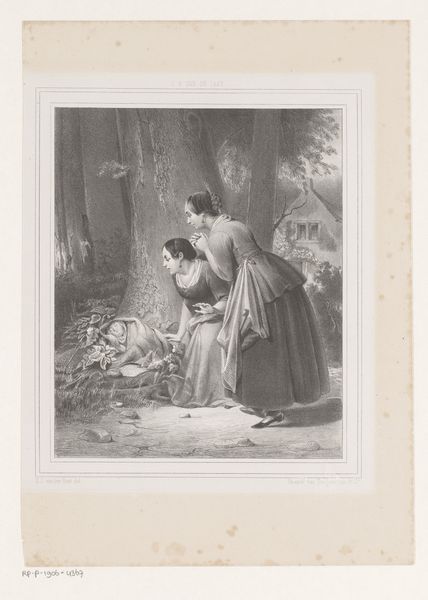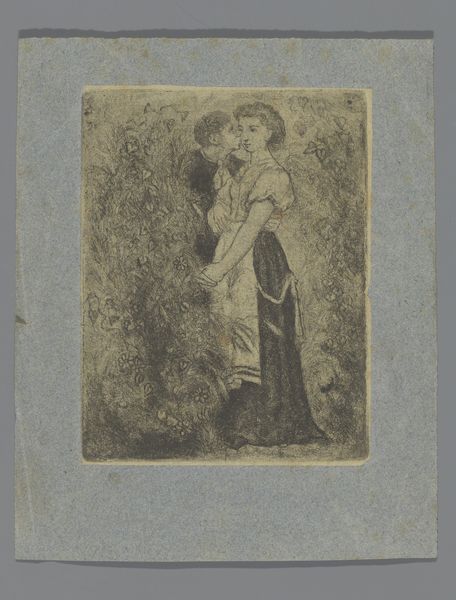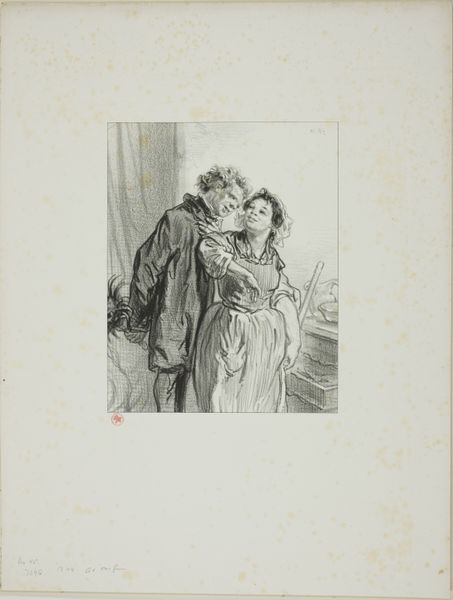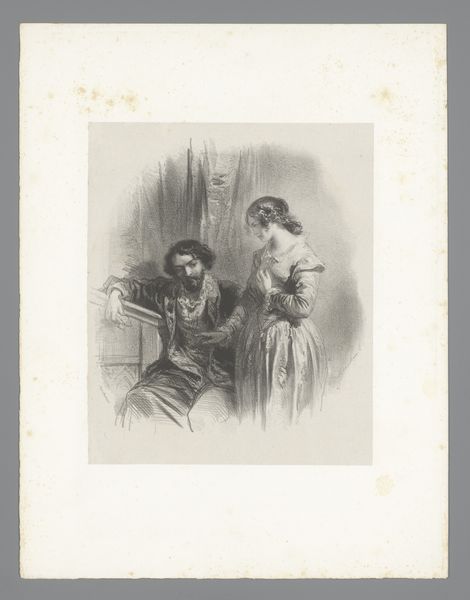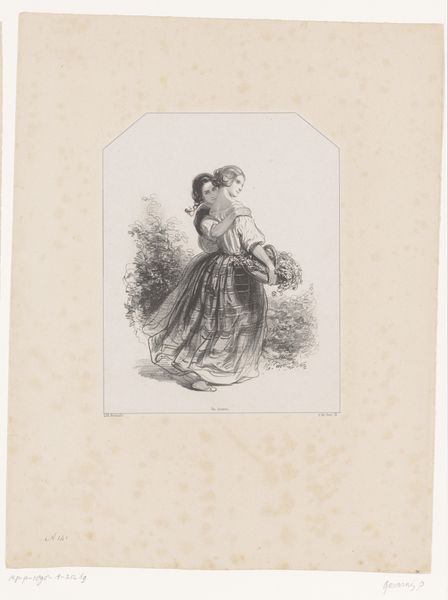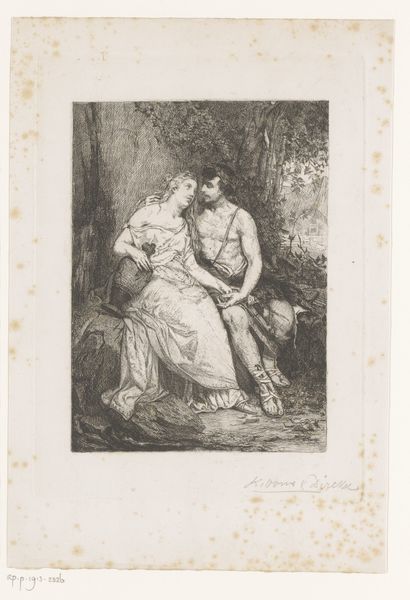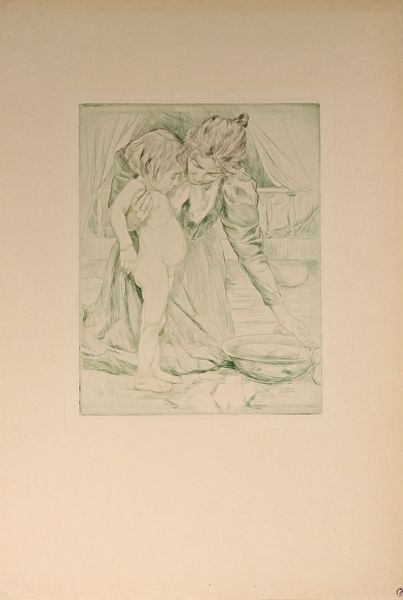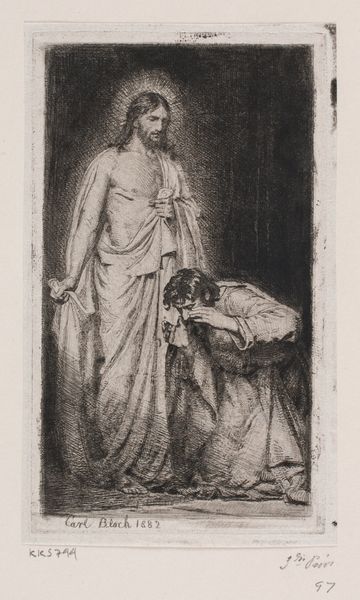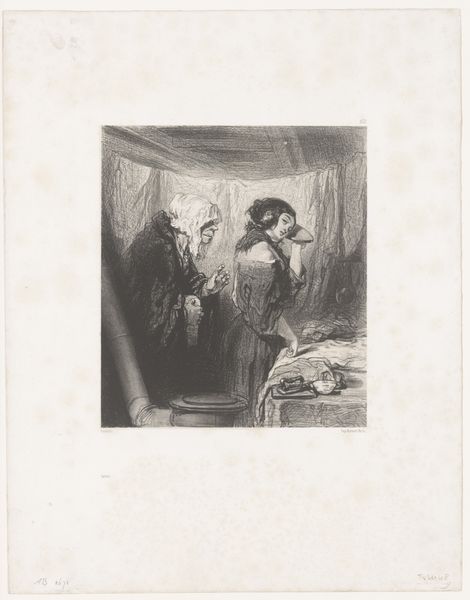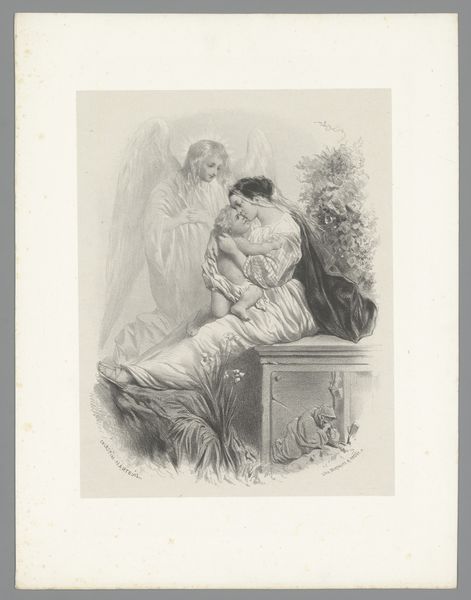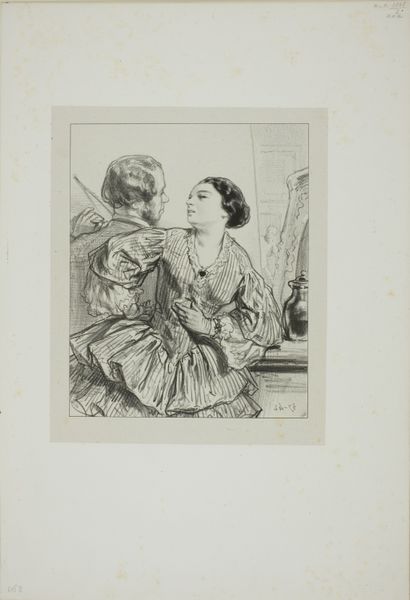
Fotoreproductie van een houtgravure door Henry Marriott Paget, scène uit Koning Lear 1892 - 1900
0:00
0:00
Dimensions: height 219 mm, width 302 mm
Copyright: Rijks Museum: Open Domain
Curator: Here we have a photogravure reproduction of a wood engraving, a scene from King Lear, crafted by Henry Marriott Paget between 1892 and 1900. It offers a stark, emotionally charged image. Editor: My initial impression is one of quiet desperation. There's such pronounced body language, and the limited palette throws those postures into sharp relief. It looks almost theatrical, yet feels intimately sad. Curator: Precisely. The scene depicts Lear in his madness being comforted by Cordelia. Paget uses the Romantic style to depict Lear’s decline, amplifying the tragedy and pathos of Shakespeare’s play and mirroring his political decline to his failing mental health. It becomes a potent image of powerlessness. Editor: And it’s intriguing to consider this work in its original medium, the wood engraving. Each line, each shadow, is painstakingly carved. What does this laborious method say about the artist's engagement with the narrative, the deliberate material rendering? Curator: It places it firmly within a visual tradition. Consider how similar engravings shaped public perceptions during this era. News, events, stories—wood engravings provided a tangible, accessible medium for disseminating ideas and shaping collective memory about complex issues. It brings a sense of authority to the story, an almost documentary feel. Editor: It gives us a sense of its construction too. The starkness emphasizes that craft is as important as its subject matter. By framing a theatrical scene in material processes, aren’t we grounding high art in real world conditions and labor? How does it speak to access and consumption of art? Curator: It speaks to broader questions of value and dissemination of art. As a photogravure, a reproduced image, the artwork reached a broader audience than a unique painting would. In considering how the themes in "King Lear" intersect with issues of class and social mobility, this image invites us to ask about our own perceptions and realities. Editor: Absolutely, it emphasizes that accessibility impacts how the subject resonates. Food for thought on our present historical moment as well. Curator: Indeed. An artwork that makes the past relevant to the present. Editor: Exactly.
Comments
No comments
Be the first to comment and join the conversation on the ultimate creative platform.
